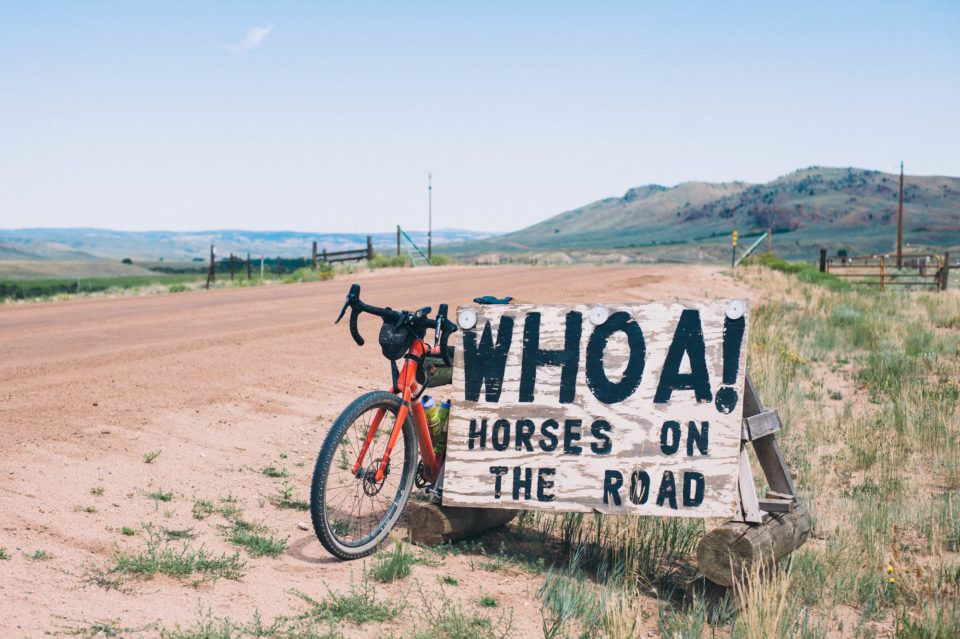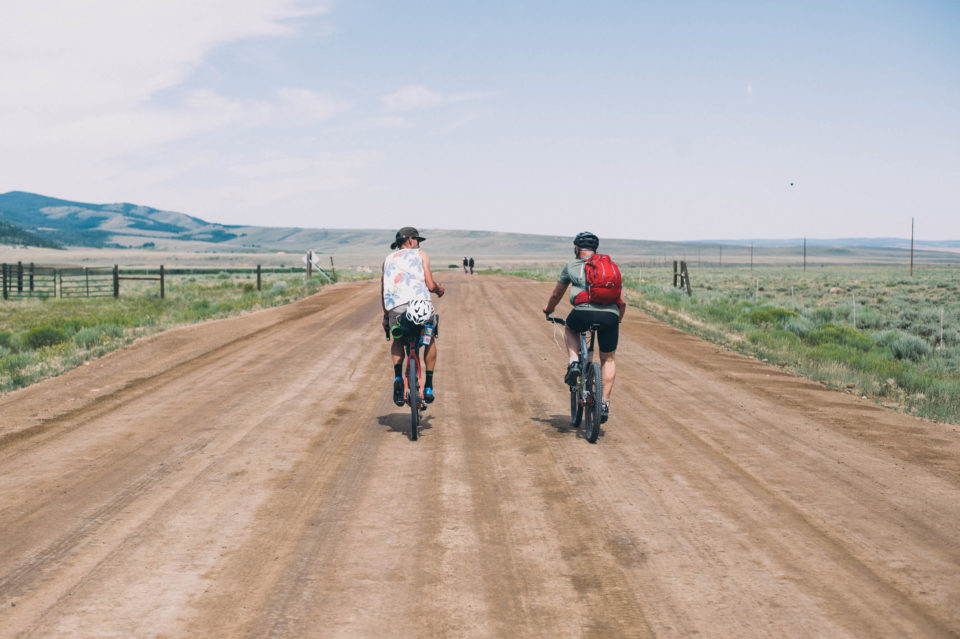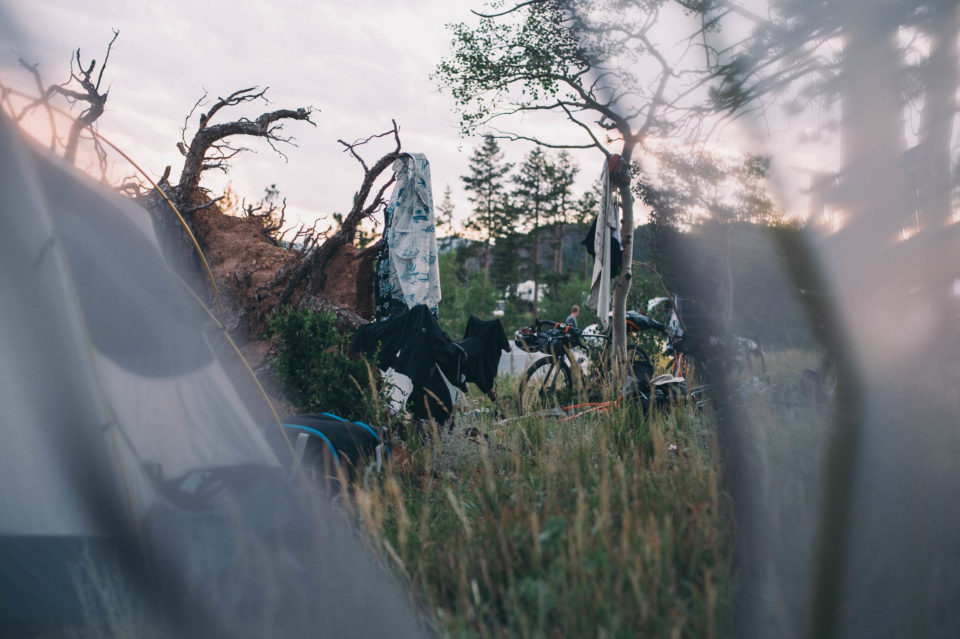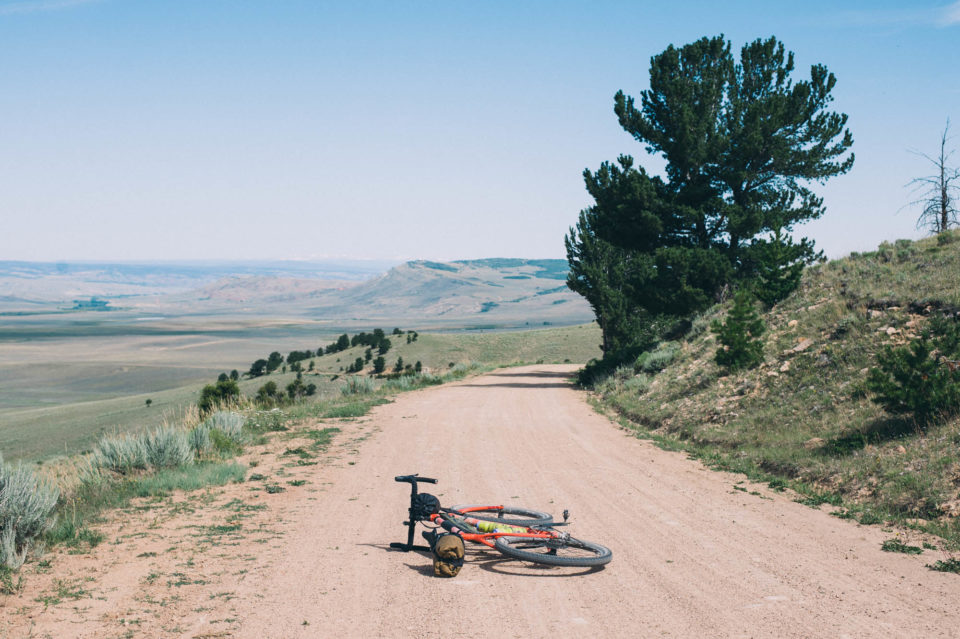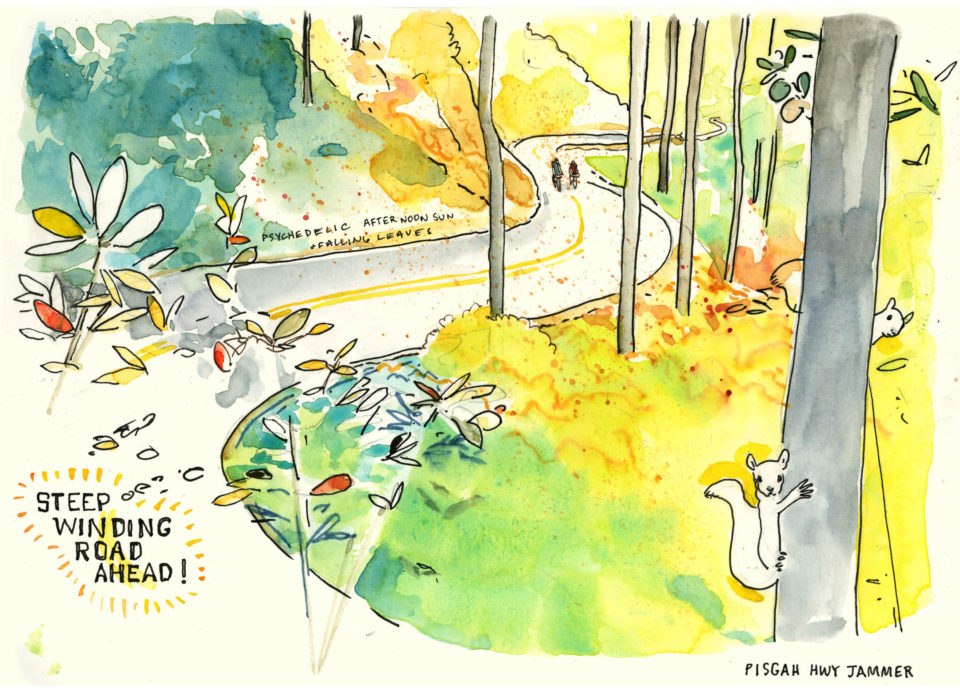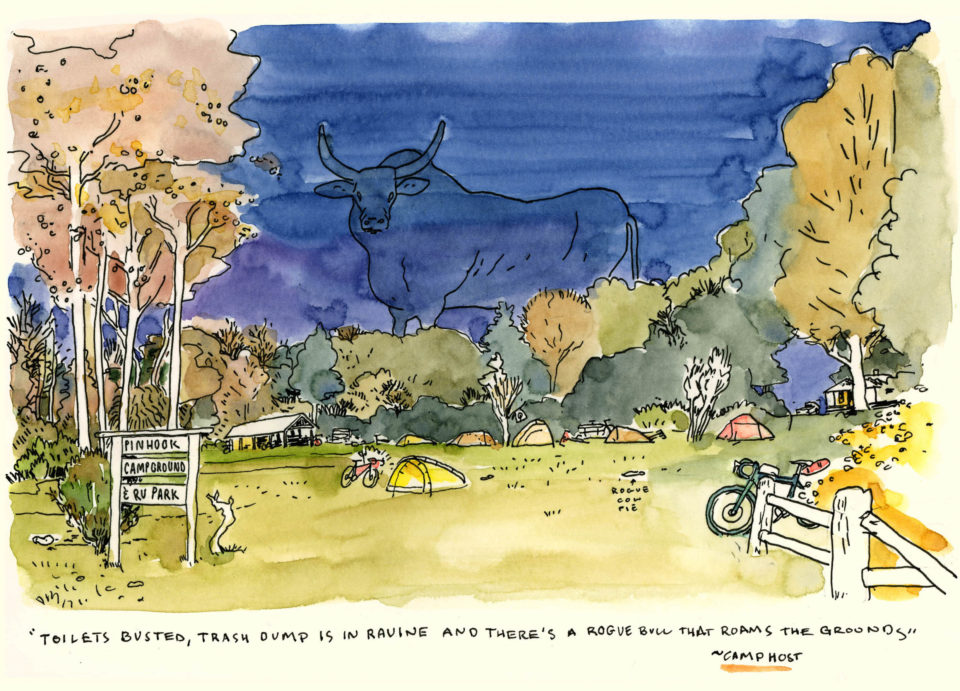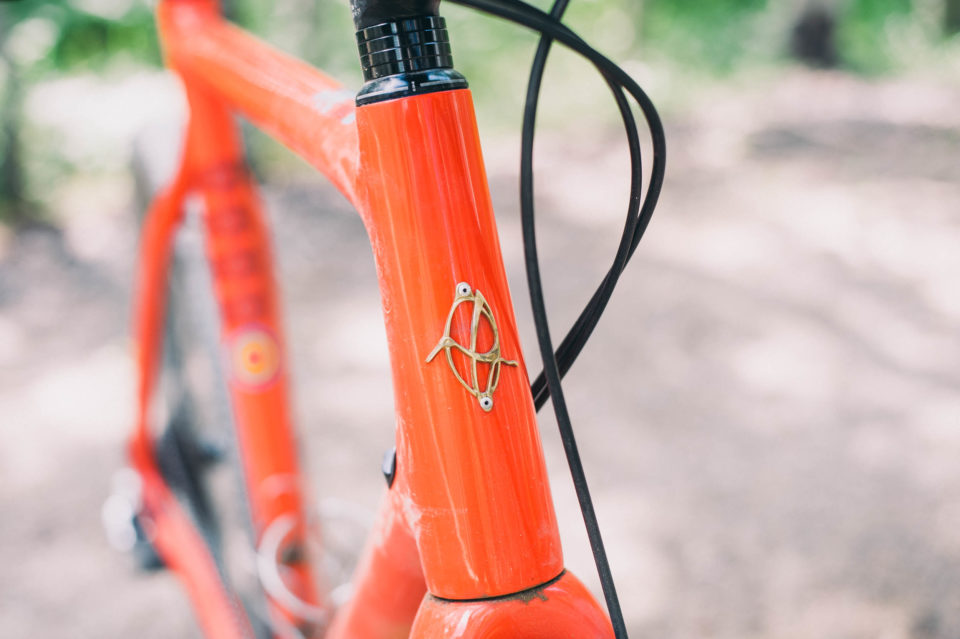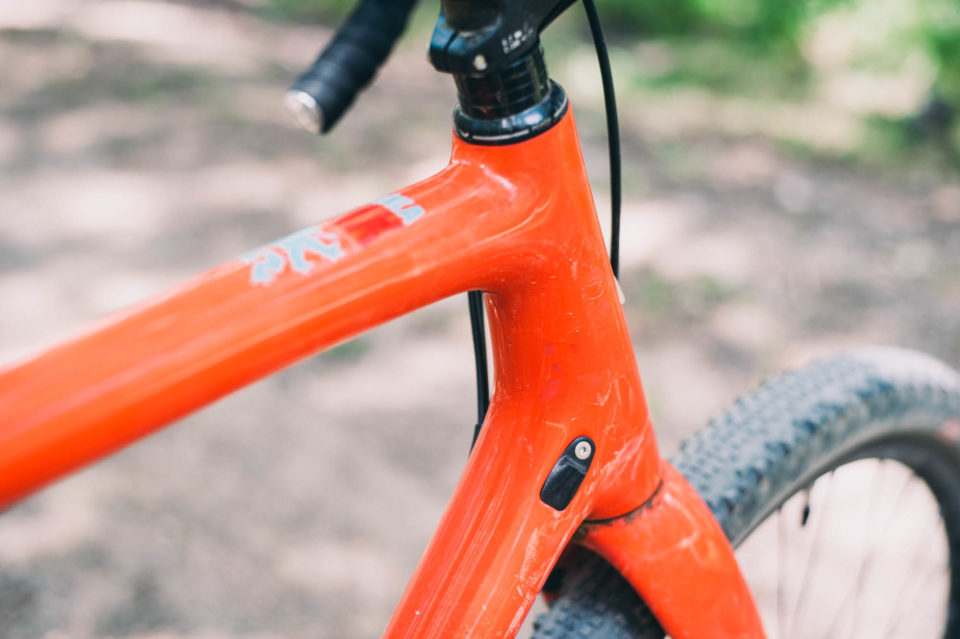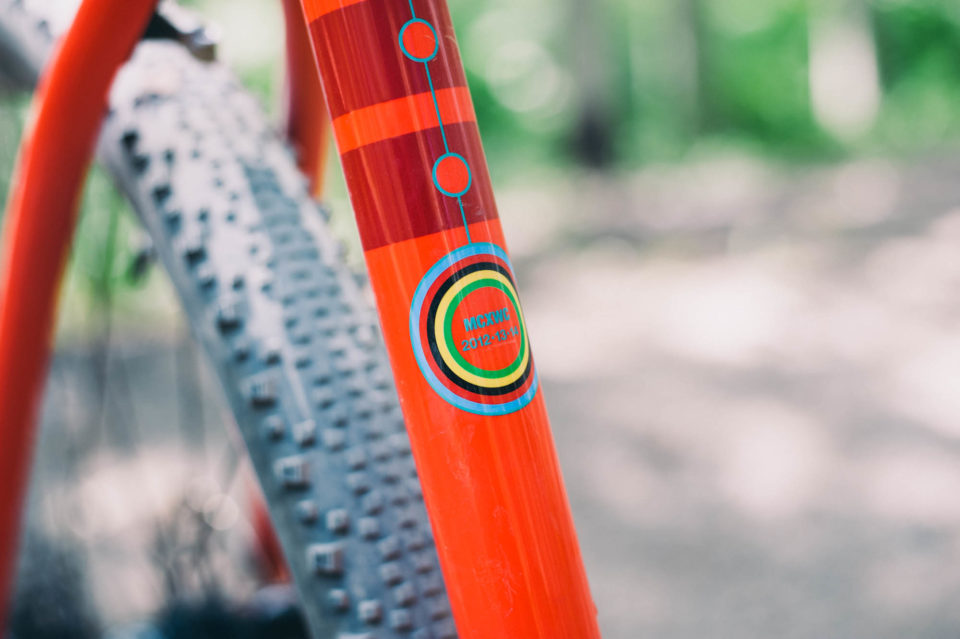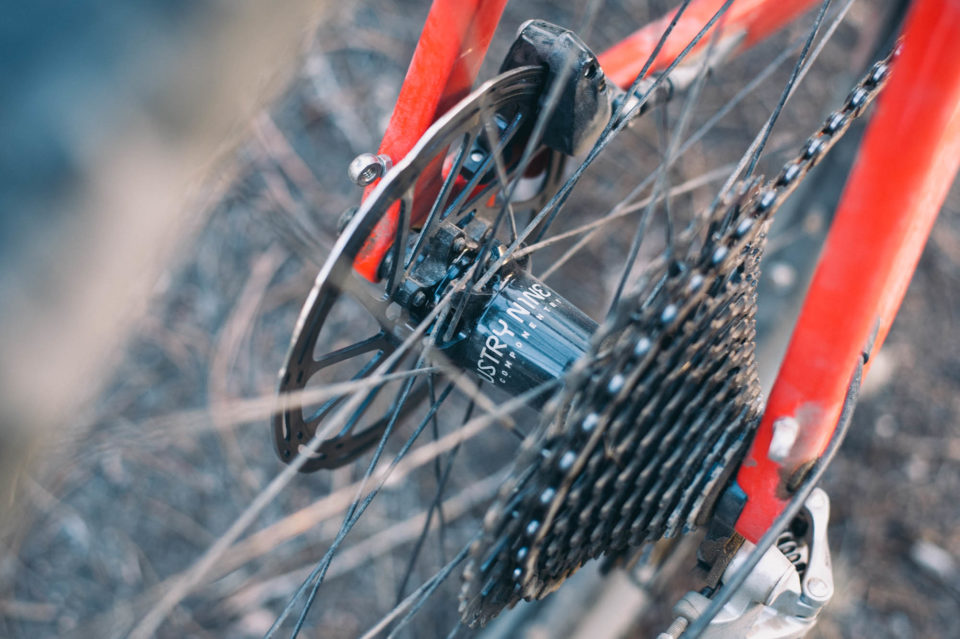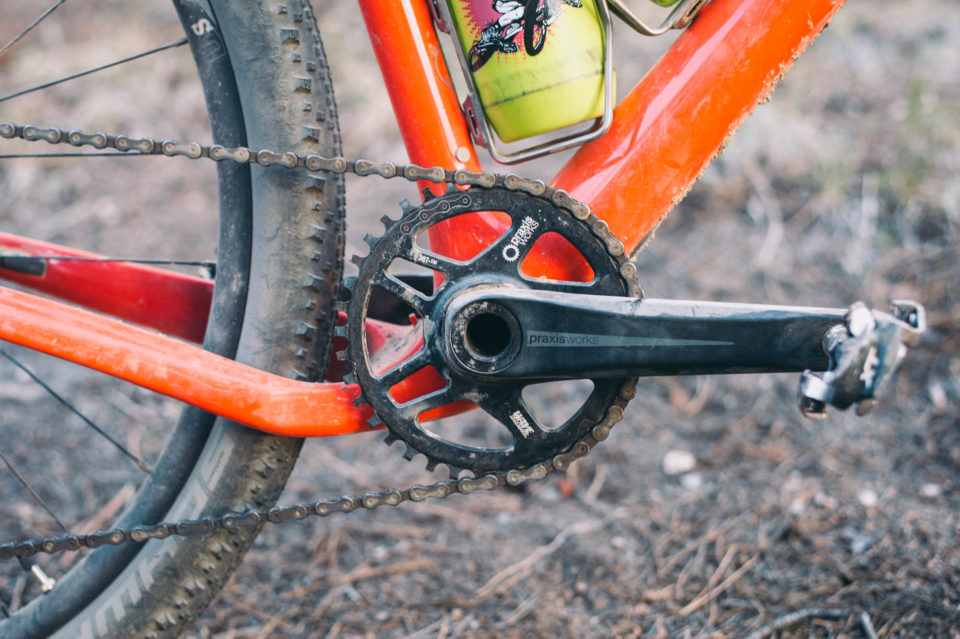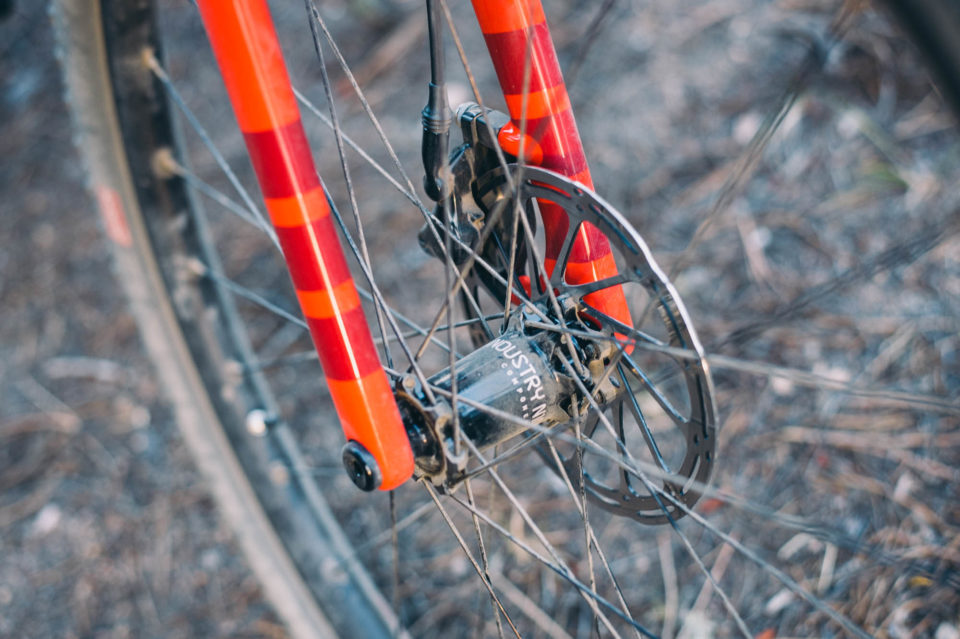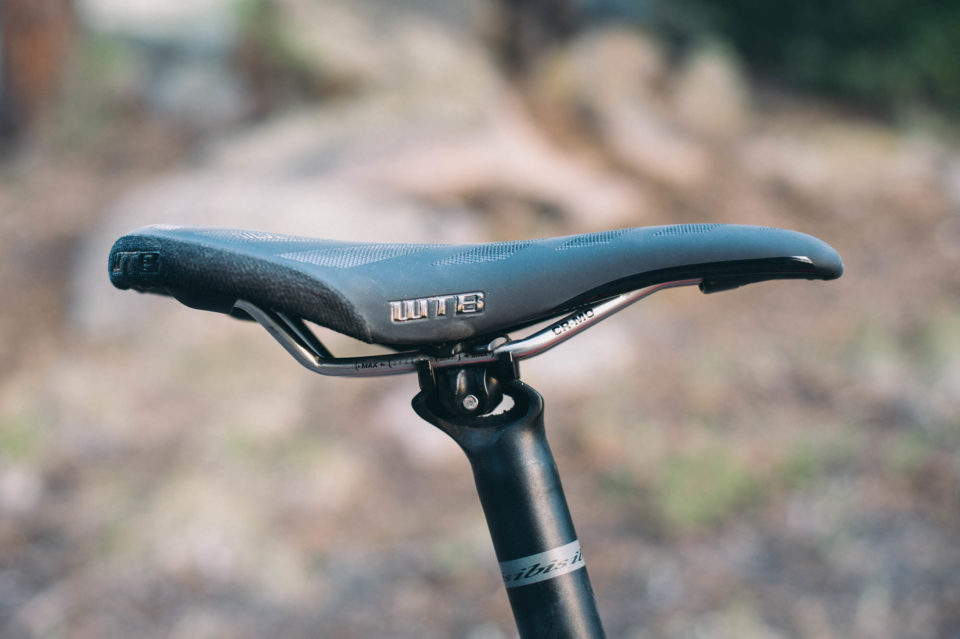Ibis Hakka MX Review: Ramble Approved
Share This
While spending a month visiting the Rocky Mountains, Lucas had the chance to put an Ibis Hakka MX to the test. Find out how it fared on everything from unloaded day rides to rugged bikepacking routes through the Colorado backcountry. Plus, a bit of Hakka history from Ibis founder Scot Nicol…
While planning my month-long visit to Colorado this past summer, my first order of business was tracking down a single bike that could handle the full range of riding I had in mind for my time around the city and up in the Rocky Mountains. Namely, I wanted something comfortable on the roads and trails that link Denver and Boulder, fast and nimble for unloaded gravel rides, and capable of taking on the Steamboat Ramble, a three-day bikepacking route and yearly event that links together some sublime slices of Colorado, traversing just about every imaginable surface along the way.
- Highlights
- Frame/fork: Ibis Carbon Fiber / ENVE CX Disc
- Angles (58cm): 72° Headtube, 73.5° Seattube
- Stack/Reach: 599mm/391mm
- BB Drop/Chainstay: 70mm/430mm
- Bottom Bracket: T47 Threaded
- Hub specs: 12x142mm / 12x100mm Thru-axle
- Seatpost: 31.6mm
- Max tire size: 700x42mm or 27.5 x 2.1″
- Price: $1,999 (frame/fork), $3,299 (Rival 1)
Enter the Ibis Hakka MX (MX meaning monster cross, at least according to the internet). It’s a bike I’ve been keeping a careful eye on throughout its various incarnations for more than a decade, and one I was especially excited to see reborn in its current form at the end of last year. The first production Hakkalügi – the model upon which the Hakka MX is based – first appeared in 1997 as a steel cyclocross bike. But it has long and storied history, well before its official debut. In fact, it’s been around in some form for close to 35 years, ever since Ibis founder Scot Nicol welded the first one up back in the mid 1980s to take on what they simply called “adventure riding” back then. But this newest iteration of the Hakka(lügi) is more than just an updated version of their existing cross model; it’s an entirely new animal, and one that’s taken a massive leap forward in terms of its versatility and suitability for bikepacking.
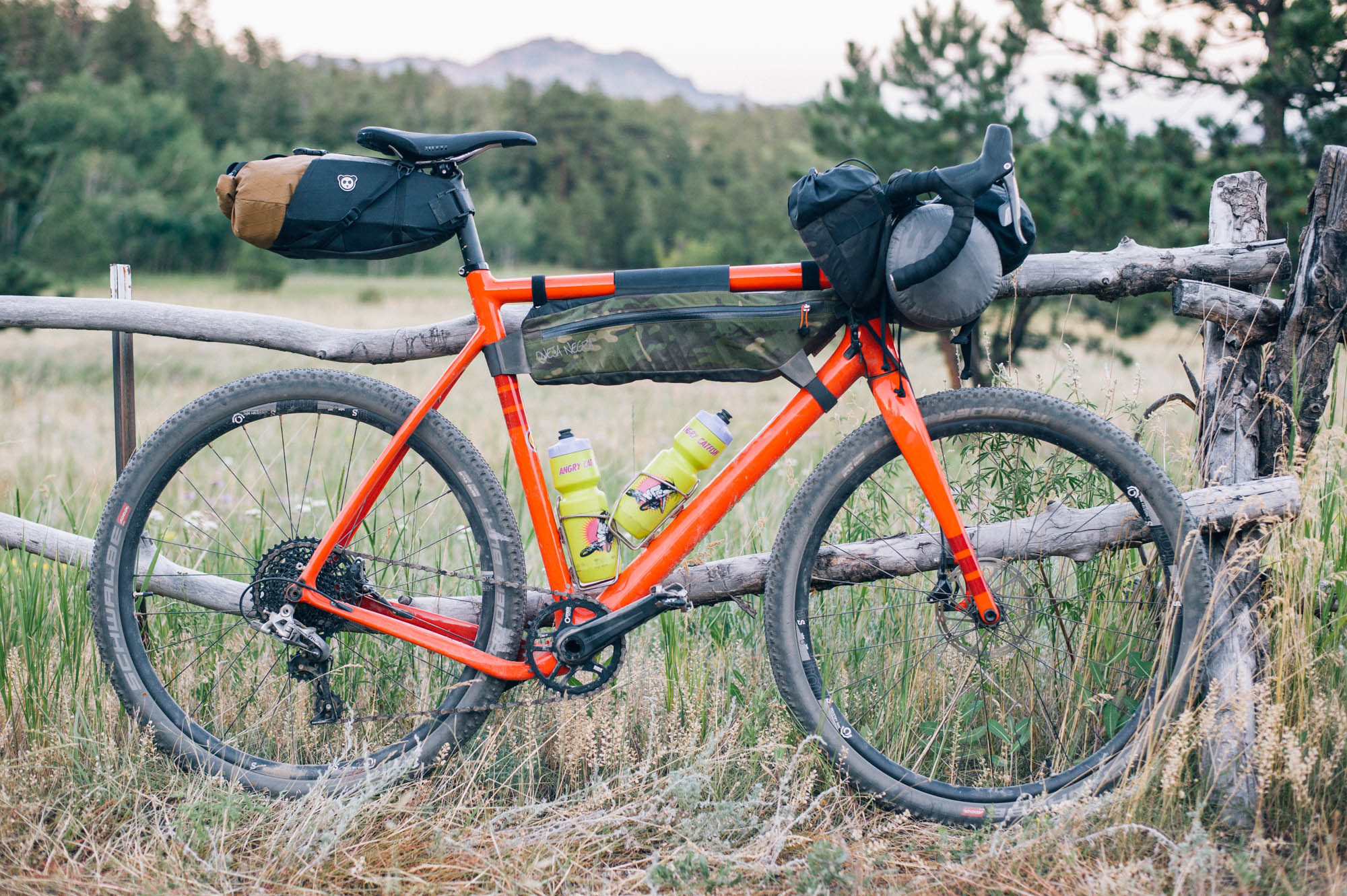
Ibis calls the reengineered Hakka MX their Swiss Army knife, and I think that’s a fitting description of how it fits into not only their lineup, but into any stable of bikes. For my part, I found it equally at home on relaxed road rides, gravel jaunts, and fast singletrack. Although it was the only bike I had at my disposal, I think it’s safe to assume it’s the one I’d keep returning to for everything I got up to in Colorado, even with a whole fleet in the garage.
Hakka History — Scot Nicol, Founder of Ibis
“Sonoma Country, where I live, is known the world over for its incredible road riding. You can ride miles and miles of narrow ribbons of pavement and not see a single car. A lot of times you’ll see more bikes than cars out on a big ride. As we explored more and more in the 80s and 90s, we wanted to spice up our adventures a bit, so we started throwing in dirt and gravel options. This opened a whole new world of routes and ride possibilities. To safely venture deeper into the rougher terrain of the hinterlands, we needed to beef up the bikes a bit. So, we added tire clearance, which necessitated cantilever brakes, and added some rack and fender mounts, built a bigger clearance fork, and the adventure bike was born. Other people liked the idea, and we made it a regular model in the Ibis lineup. At the time, one of the tire options was a big old Hakkapelitta 700C knobby, and we made the bike work with that tire. Now it was time to name the bike. Since we were also jumping on the cross races on this bike, which, with its high-paced riding could involve some lung butter being expelled, the natural name for the bike to tie things all together was the Hakkalügi. And the rest is history.”
A Look at the Numbers
Weighing in at an impressively slight 1,000 grams, the Hakka’s lightweight monocoque carbon fiber frame features a 1.5” tapered head tube, a refined-looking dropped chainstay, and it houses an oversized T47 bottom bracket shell. Ibis’ move away from often finicky, sometimes creaky press-fit bottom bracket to a threaded T47 BB shell is a noteworthy one, adding a bit of stiffness and opening up a wide variety of crankset possibilities. The matching ENVE carbon fork features a 12x100mm thru-axle, and the new 12x142mm rear thru-axle brings the redesigned ‘Lügi frame up to the standards of the day.
In terms of its geometry, the 61cm model I demoed has a 72° head tube angle, 73.5° seat tube angle, a 70mm bottom bracket drop, 430mm chainstays, and 616mm of stack. Comparing the Hakka’s angles to those of its competitors, it might appear to be a tad more race-oriented and less slack, but in practice I found it incredibly well-suited to long days in the saddle, and I put in quite a few.
Taking all the numbers together, the Hakka doesn’t look to be optimized for any one type of riding. It does, however, seem to deserve its “Swiss Army knife” moniker, at least in my experience. It handled everything I threw at it as well as I could have hoped.
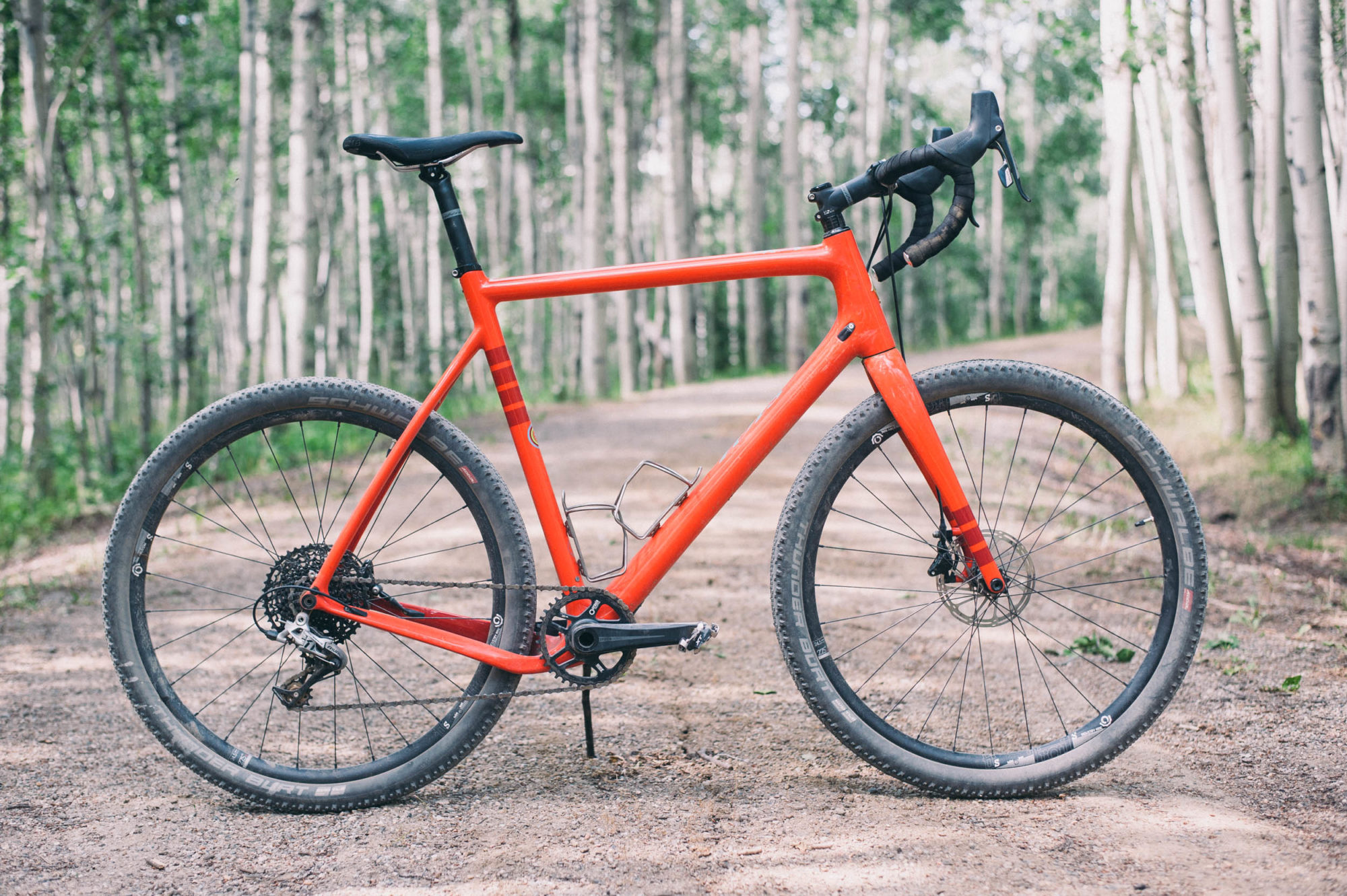
Wheels and Tires
Taking advantage of the new chainstay design, the Hakka MX has generous clearance for 27.5” x 2.1” or 700c x 40-45mm wheels and tires. Ibis quotes a safe 40mm tire clearance, but I imagine you’d be okay squeezing in up to a 45mm tire without fenders – definitely 42s without issue.
On the Rival 1 complete build – their “entry level” build, if we can call it that – Ibis specs aluminum Stan’s Grail 700c rims with a 20.3mm internal width or aluminum Ibis 733 27.5” rims with an ample 29mm internal width, paired with 700x40mm Schwalbe G-One or 27.5 x 2.1” Schwalbe Thunder Burt tires.
I opted for a 27.5” wheelset on the bike I borrowed. While I’ve owned and ridden a handful of other 27.5-wheeled rigs before, the Hakka is the bike that fully sold me on the platform. Granted, it helped that they kindly set me up with an upgraded Industry Nine Trail S wheelset, but I was thankful for the added volume, regardless. More on that later.
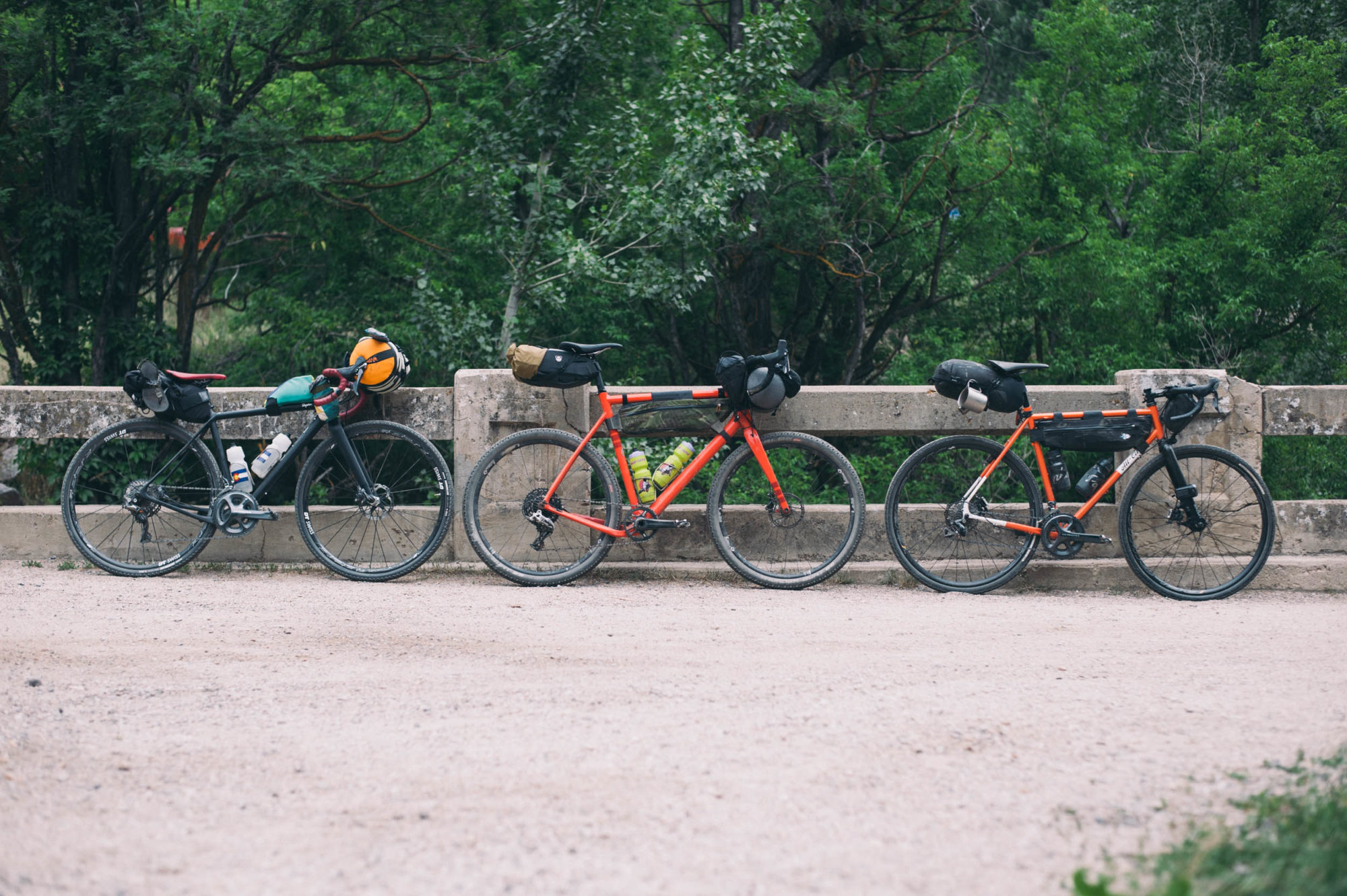
Hakka vs. The Competition
In its new form, the Hakka MX occupies the increasingly crowded niche of carbon all-road / adventure / gravel / whatever we’re calling them bikes with clearance for 27.5 x 2” or larger tires. Off the top of my head, the Hakka’s obvious competitors include the 3T Exploro, Bombtrack Hook EXT-C, Norco Search XR Carbon, Open U.P., and Salsa Warbird 650, among others. In short, there are a lot of bikes that are marketed to do exactly what the Hakka does, all decidedly capable rigs in their own right, and each with its own unique quirks. Hopefully, we can get reviews of all of them up here before too long.
Assuming you’re ready to shell out a few thousand dollars for a complete bike, the Hakka seems to be a pretty good value at its price point. It’ll cost you less than a complete version of most of the competitors listed above, and it’s the least expensive option as a frameset only. Of course, there are a lot of steel and aluminum bikes that will get you out there riding with a markedly lower price tag, but if you’re here reading this you’ve probably already decided that a carbon frame is worth the extra investment.
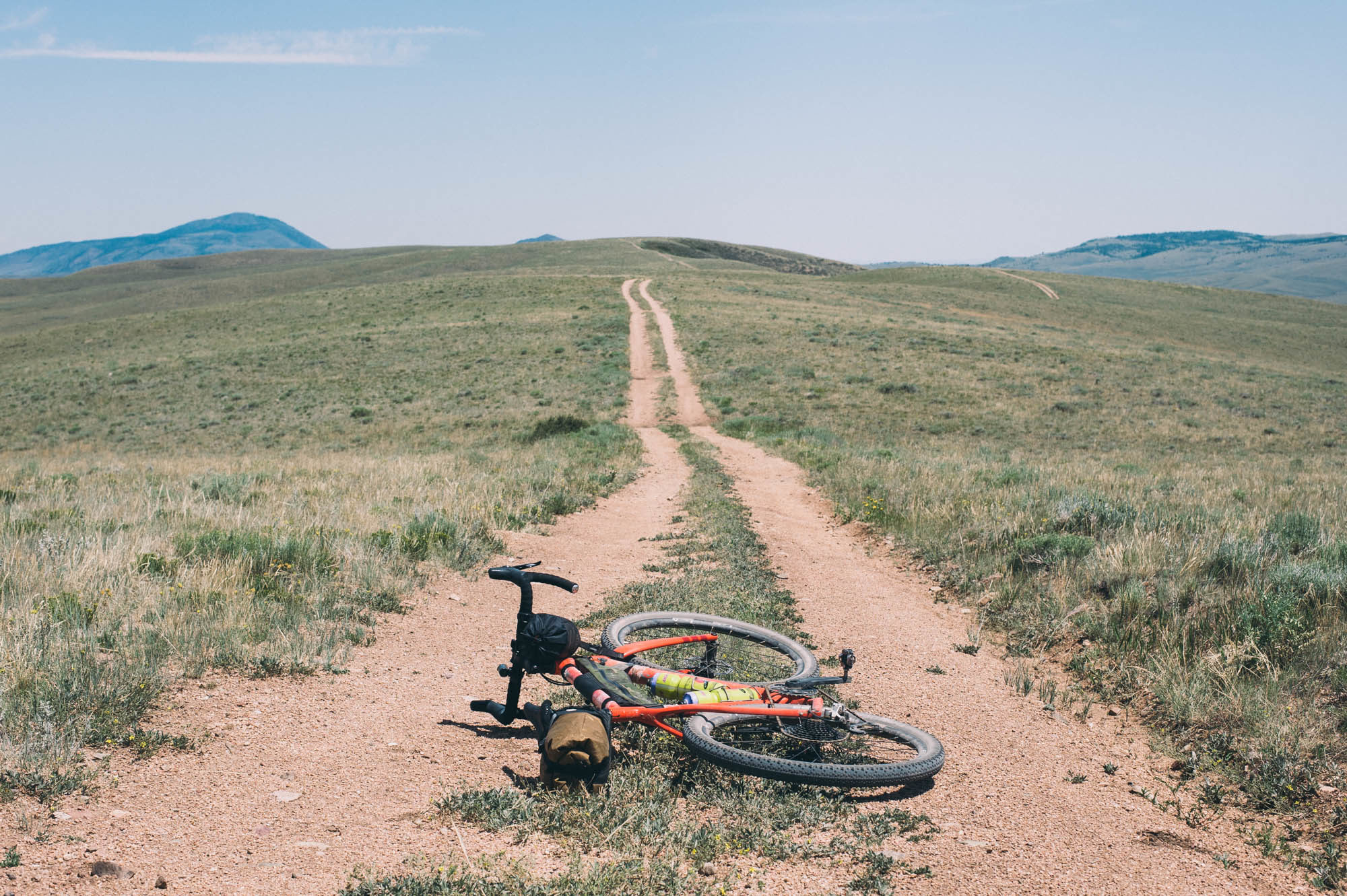
While Out Rambling
Departing from Fort Collins each summer, the Steamboat Ramble winds through about 200 miles of heavenly Colorado high country, climbing some 20,000 feet on gravel before culminating in a scenic singletrack descent into Steamboat Springs. It’s a semi-supported bikepacking trip, which in this case means it includes delicious, catered backcountry meals, coolers full of beer and snacks at the top of the most grueling climbs, and a roving team of medics, mechanics, and generally great people who want to ensure everyone has a fun time. Organizer Peter Discoe has turned the various Ramble Rides into truly unique experiences that might be best described as part rolling party, part hardest thing most participants have ever done.
The Ramble route kicks off with a 30-mile uphill slog out of Fort Collins on pavement. Loaded up with bikepacking bags, the Hakka felt fast, and the 2.1” Schwalbe Thunder Burts rolled quickly along the tarmac. Turning off of the route’s only significant paved stretch and onto gravel, I settled in for a long day that included some steep, sustained climbs. I was impressed with how comfortable and neutral the Hakka felt over the course of my longest day on the bike.
The second day of the Ramble includes an optional detour along the stretch known as the OG (the sign at the fork in the road for the OG points toward “Certain Death”), which is ultimately not nearly as bad as advertised, but does serve as a good proving ground for any bike. It features some abrupt, chunky pitches, bathtub-sized potholes, and a fast, loose descent. More than anywhere else on the route, I was impressed by the Hakka while riding the OG. It felt nimble like a cross bike while spinning my way up, and stable like a mountain bike while bounding down the rocky downhill sections.
Not entirely keeping with the ethos of the event, I ditched nearly all my bags on the last day of the this year’s Ramble in anticipation of the long gravel climb up over Buffalo Pass and the ensuing singletrack descent down Flash of Gold on the backside. The 10-mile climb up to 10,295-foot Buff Pass felt like a breeze aboard the unloaded Hakka MX, and had me at least half-seriously questioning my obsession with burly steel bikes. It climbs really, really well.
All in all, the Hakka MX rode like a dream on every segment of the Steamboat Ramble (though admittedly I opted for the comforts of a van ride back this year). It was fast where my hardtail felt sluggish the previous year, and inspired confidence in the more technical sections where my more traditional cross bike left me feeling somewhat unsteady.
Who Should Buy A Hakka?
At least for the time being, I think my riding interests have become narrowly focused enough to the point where a bike like the Hakka MX could suit pretty much all of my riding needs, save for the occasional trip that demands a fatbike, for example. I can’t be bothered to ride anything skinnier than a 42mm tire, most of my riding is on gravel, sometimes mixed with bits of flowy singletrack (or pavement connecting segments of either), and when I’m just out for a spin I like to be able to pop onto any trail when I wonder where it goes. A lot of my rides are done unloaded, but I’ll often throw some bags on and head out for a few nights (or longer) of bikepacking. If that sounds like you, this is a bike worth considering.
Having never been a serious racer, I can’t speak to its aptitude there, but after putting in some full days in the saddle at a more modest pace, I can attest to its suitability for long-distance riding, both loaded and unloaded. And certainly nothing about the Hakka’s design or build will prevent you from going fast.
Is the Hakka MX going to replace your road bike or full-suspension mountain bike? Nah. Could it reasonably take the place of your cyclocross bike and hardtail, combined? I think so. Then again, that all depends on what kind of riding you get into on your hardtail.
Hakka Illustrated — Chris McNally
We love Chris McNally’s illustrations (so much, in fact, that we commissioned him to create some original work for the first issue of The Bikepacking Journal, and enjoyed those enough to recognize him in the Best Art/Multimedia category in our 2018 Bikepacking Awards), and we were excited to see his rendition of the Hakka MX pop up online. Chris was among the first people to put in some bikepacking miles on the Hakka MX, and when asked to share his thoughts on the updated rig, he told us, “I have been a longtime fan of the versatility of the Hakka(lugi). I have owned and loved every iteration of this bike. The Hakka MX is the multitool of bikes, a fix for any problem, dirt, trail, hobo path, or road…” See more of his Hakka illustrations on the Ibis mini story site, Notes from a Ramble.
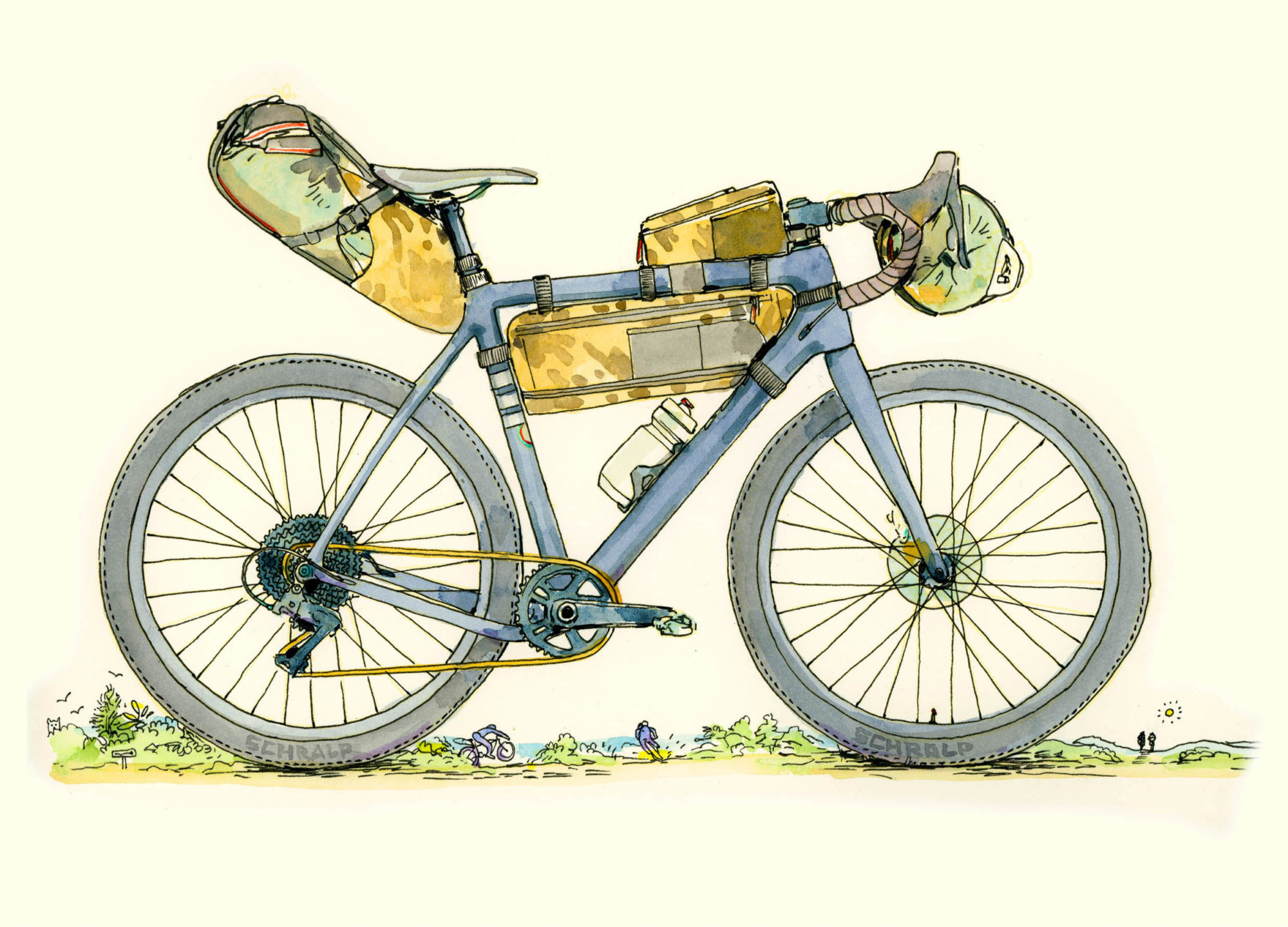
Some Thoughts on Carbon
Diehard carbon fiber devotees will moan at this, but I’m still somewhat hesitant to fully embrace the material, at least for my only bike. Would I take a carbon bike on a long-term international trip? I’m honestly not sure, though obviously countless people have. I remember watching Logan beat the hell out of his carbon bike in Kyrgyzstan, and surely he didn’t go any easier in Cuba, but I can also recall my steel frame getting repeatedly smashed around, hanging halfway out of the trunk of a beat up old taxi, or arriving at the airport with its cardboard box in tatters on various trips, and I have an uneasy feeling about how a carbon alternative might have fared in those scenarios.
I like the idea of a bike that can be repaired easily if something goes wrong, though in truth I’ve never been in a scenario that necessitated emergency welding at a roadside auto repair shop, and likely never will. The bike I learned to love cycling on was a steel Schwinn from the early 80s, and while I no longer own it, I don’t doubt that it’s still out there being ridden by someone in some form. I’m curious to know where today’s carbon frames will be in 30 years. I suspect that more of them will be in landfills than their chromoly counterparts, but I’ll be glad if time proves me wrong.
Build Kit (SRAM Rival 1, Complete)
The reasonable starting point for anyone looking to buy a complete Hakka MX is their SRAM Rival 1 build, which comes in at $3,299 with your choice of wheel size. It’s a practical, solid build, that shouldn’t need any significant upgrades out of the box beyond the usual preferences like saddle and stem.
- Fork ENVE CX Disc Fork, Thru Axle
- Wheels Ibis 733 Alloy, 32 hole, 27.5 or Stan’s Grail Alloy, 32 hole, 700c
- Tires Schwalbe Thunder Burt 27.5” x 2.1” or Schwalbe G-One 700c x 40mm
- Brakes SRAM Rival
- Cranks Praxis Zayante Alloy 172.5, 30mm spindle, 40t Alloy Ring
- Rear Derailleur SRAM Rival
- Shift Levers SRAM Rival
- Cassette SRAM PG 1130 11-42T
- Chain CN PC1110 114LI W/ PowerLock 11Speed
- Headset Cane Creek 40 Headset, IS41/28.6 IS52/40
- Grips Black EVA Bar Tape
- Handlebars Ibis Flat Top 7075-T6 42 or 44 cm
- Stem Ibis 31.8mm (70, 80, 90, 100mm)
- Seatpost Ibis 31.6 x 350 L, 7075
- Saddle Ibis custom saddle, CrMo rails
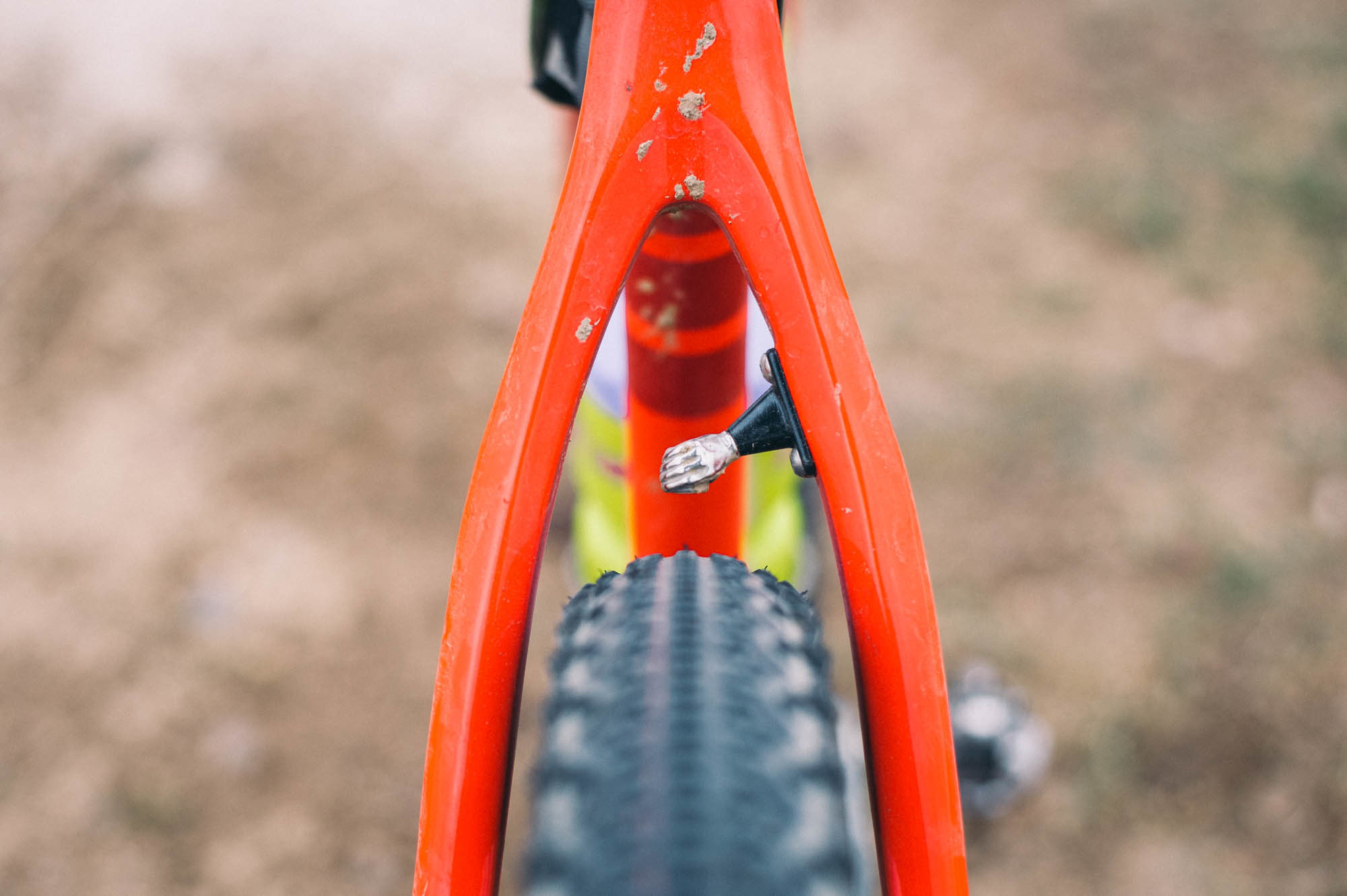
Pros
- Incredibly light frame weighs just 1 kg
- Versatile geometry means it’s well suited to nearly anything
- Smart updates make the new Hakka a bikepacking contender
Cons
- Missing third bottle mount on the downtube
- Lack of mounts on the fork blades
- Expensive enough to be out of reach for many
Price and Availability
The Hakka MX comes two colors, Fireball (as pictured here) and Coal (matte black). It’s available in six sizes to fit most riders: 49, 53, 55, 56, 58, and 61cm. Build options include frame and fork alone for $1,999, a complete Rival 1 build for $3,299, and a complete Shimano Di2 for $6,499. Both build kits come with your choice of 700c or 27.5” wheels. Visit IbisCycles.com for additional details and information on where to purchase a Hakka of your own.
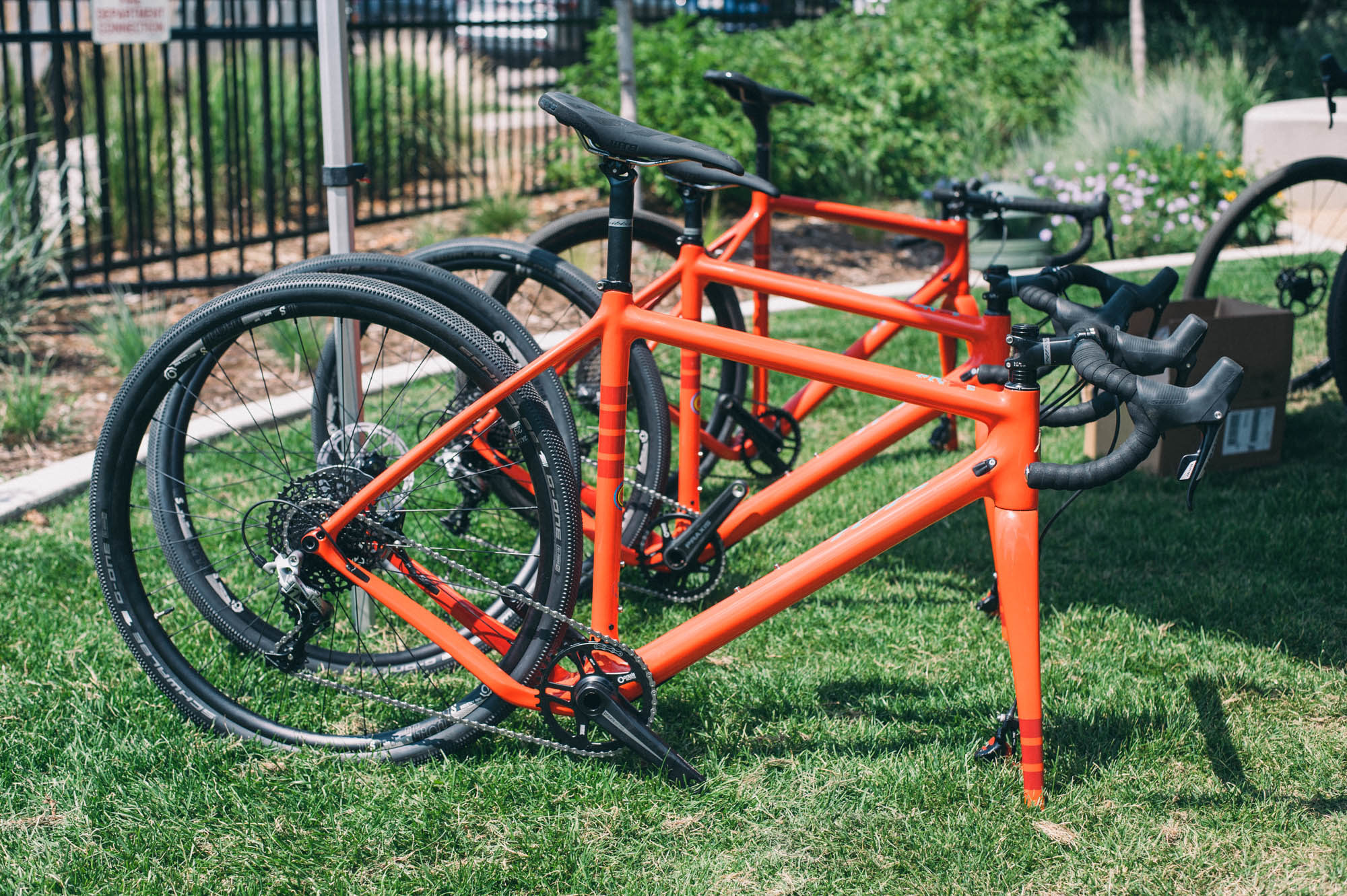
Wrap Up
Is the Ibis Hakka MX the most fun bike I’ve ever ridden? Yep, hands down. Perhaps it’s some lingering DNA from its Hakkalügi heritage, but I found that it encouraged me to give it a bit more gas than I’d normally be inclined to, even on casual rides. It just responds that well to being pushed. When loaded down with bikepacking bags, it felt both comfortable and confident on all the roads and trails I pointed it down, including terrain that I’d previously had some reservations about tackling. After a couple months off the bike, the Hakka MX got me really excited about riding again. And the fact that I felt a general restlessness just knowing it was sitting idly in the garage and was always the one instigating group rides and overnighters certainly says something.
Please keep the conversation civil, constructive, and inclusive, or your comment will be removed.













